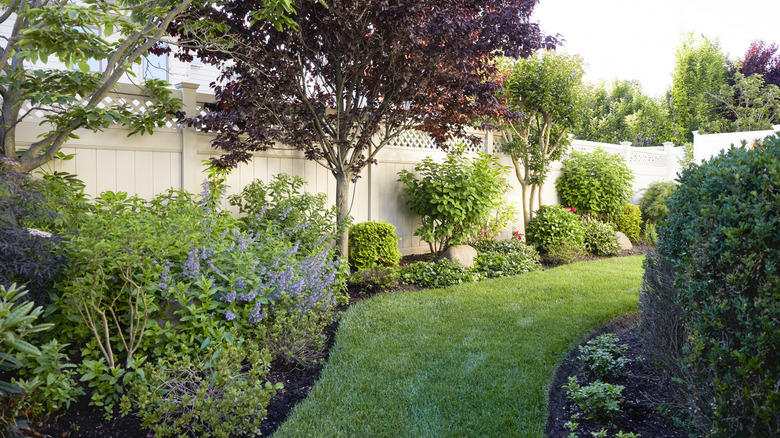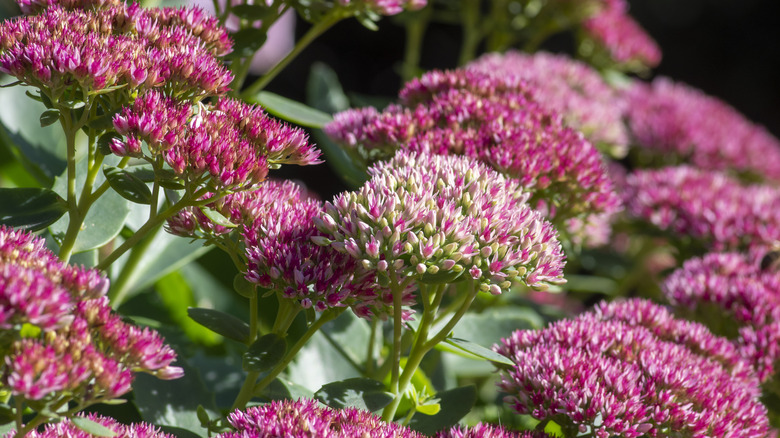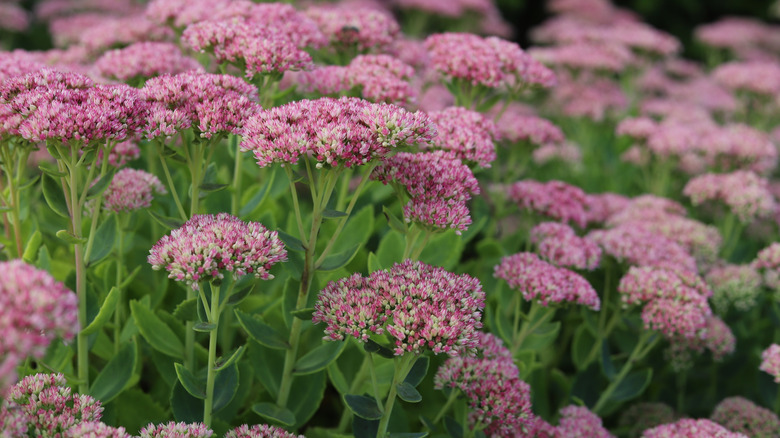Fill Landscaping On A Budget With A Popular Garden Flower You Can Grow From Seed
Let's face it, gardening is not always a budget-friendly hobby. From fertilizers to tree saplings to pond lining, there are loads of big purchases you need to make when working on creating the garden of your dreams. Thankfully, when it comes to filling backyard landscapes on a budget, there are some beautiful perennials that you can grow from seed. One fantastic, low-maintenance option is sedum (Hylotelephium). Hardy to USDA Hardiness Zones 3 to 9, sedum blooms from August to October. It is easy to grow from seed and comes in a range of vibrant colors, such as pink, red, and purple. With star-shaped flowers and fleshy leaves, sedum is an intriguing and attractive choice to fill landscaping and add color and variety to your garden. Furthermore, you can pick up a packet of sedum seeds pretty cheaply! Although the price depends on what variety you choose, you can get a packet of 1000 seeds for around $5 at a range of retailers. This amount of seeds would cover approximately 20 square feet.
Popular varieties of sedum include autumn joy (Hylotelephium spectabile 'Autumn Joy') and showy stonecrop (Hylotelephium spectabile). Both can grow up to 2 feet tall and produce beautiful, bright flowers. However, there are loads of other options out there for sedum seeds, so take your time to pick the variety that is right for you. What colors do you want to add to your garden? Are you looking for a flower that will bloom later in the year? The different varieties also have different hardiness ratings, so keep that in mind when buying.
How to start sedum perennials from seed indoors
When growing sedum from seed, start them inside six to eight weeks before the last spring frost. So, if your last frost is usually around April, start the seeds off in February. Many sedums need full sunlight to flourish, and this can be replicated indoors with fluorescent or LED lights. They also need well-drained, loose soil to germinate, so opt for a mix of compost, sand, and coconut coir or peat moss. The seedlings will start to appear in two or three weeks.
When there is no more risk of frost, it is time to harden them off before planting. Hardening off saves your seedlings from transplant shock, and the process takes a few weeks. Firstly, move your seedlings out to a shady spot during the day and bring them in at night. As the weeks progress, gradually increase the time your seedlings spend in the sunshine. Once they have spent a few full days outside, it is time to plant them!
Plant your sedum seedlings in well-draining soil in full sunlight, giving each plant enough room to grow. Sedums need 3 to 6 feet of space when planted out, and using a staggered row-planting pattern will help them fill out your landscape more quickly. As they grow, continue giving them support and care. Water the plants for the first few months to help them settle in, but you won't have to do this all year round. Once they are established, they are generally a pretty drought resistant plant.
How to sow sedum seeds outside
If you have a large landscape to fill, you probably won't have the space to start your sedum seedlings off inside! Thankfully, you can sow your seeds directly in the ground once you are sure there is no risk of frost. Soak your seeds overnight, as this will help jumpstart the germination process once they are planted. You should also prepare the ground you are planting into by loosening the soil and adding organic matter. Tilling is one way to create a looser structure in the soil, and organic matter provides nutrients to your seeds, which helps create an environment suitable for germination.
When sowing your sedums, press the seeds into the soil, ensuring that there is enough room for the variety of sedum you are growing to reach its maximum spread. As the seeds start to germinate, keep an eye out for weeds and make sure that the seedlings are getting enough water and light. Water the soil regularly to help your sedums start off, and remove any weeds as soon as you spot them.


